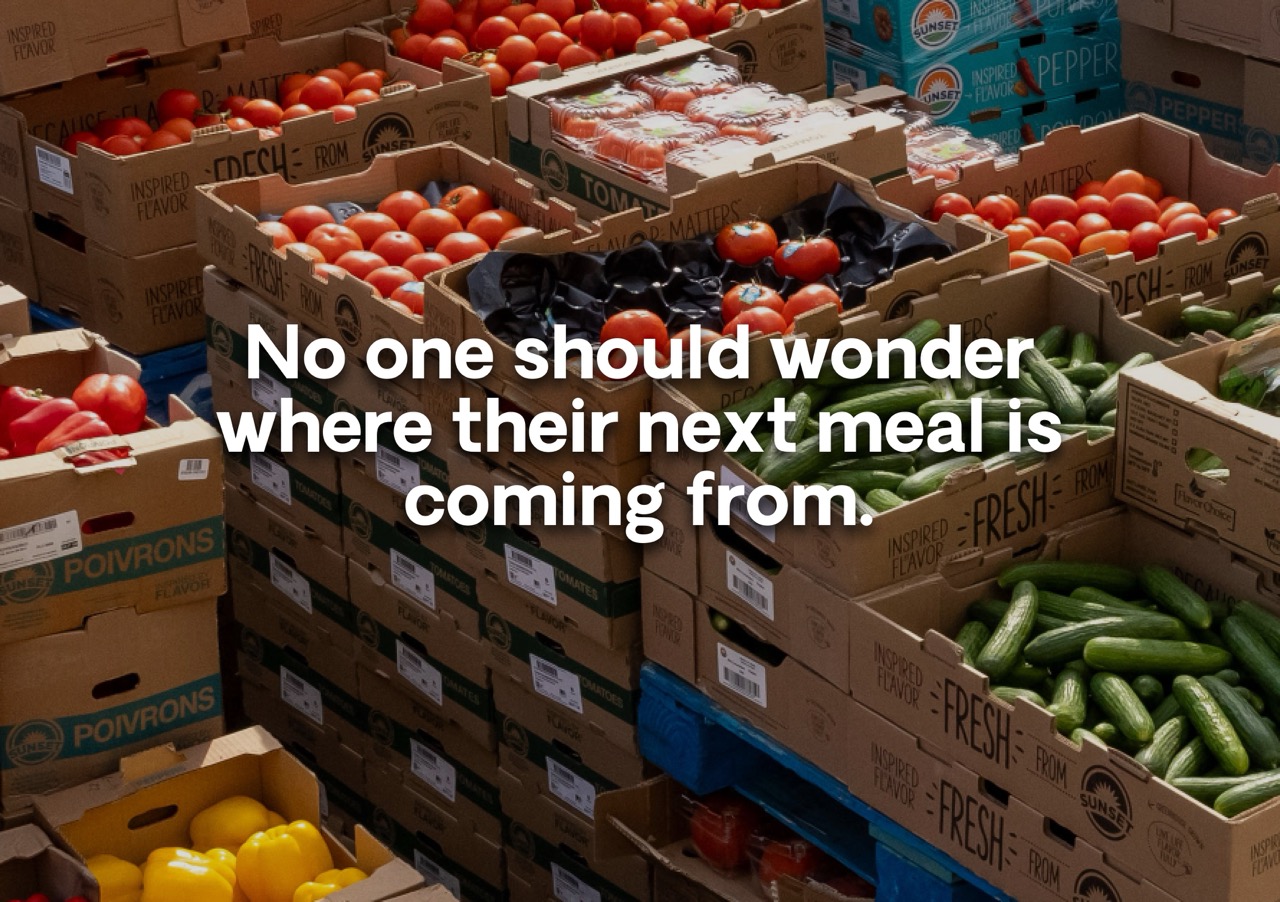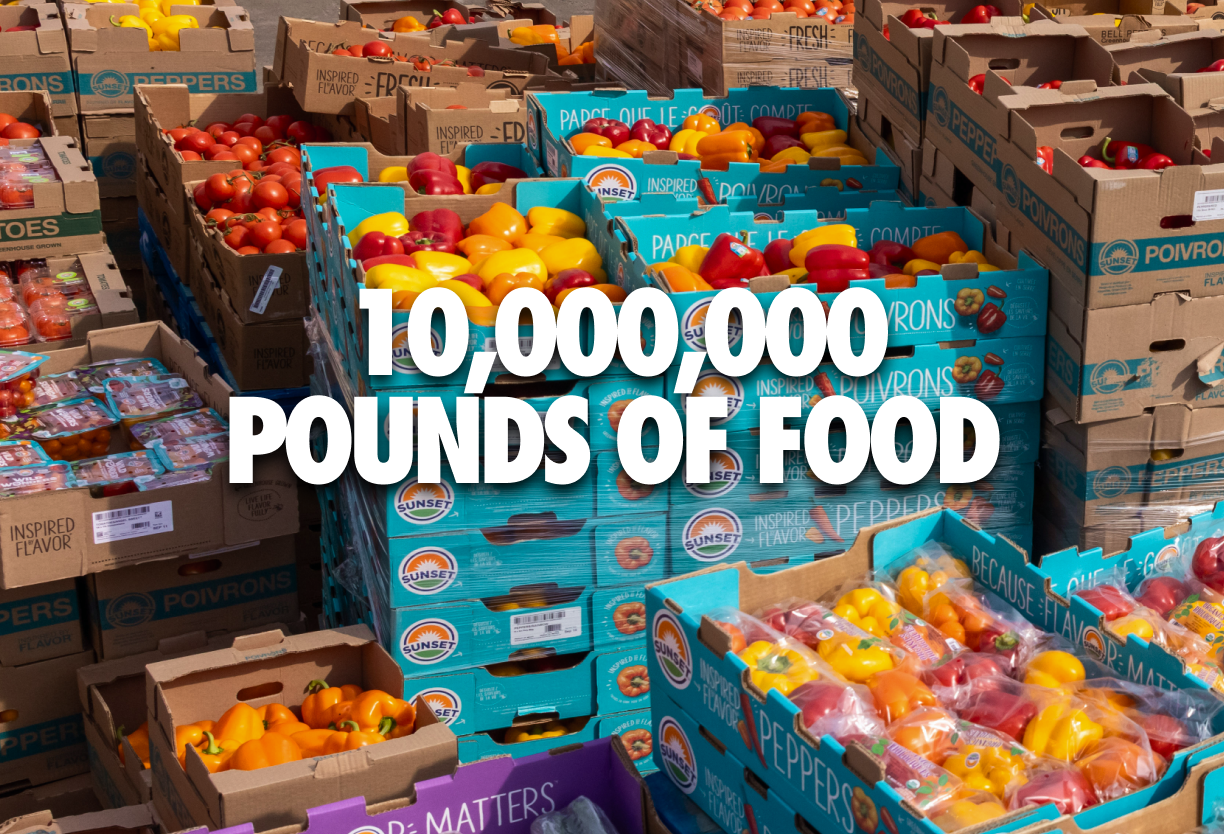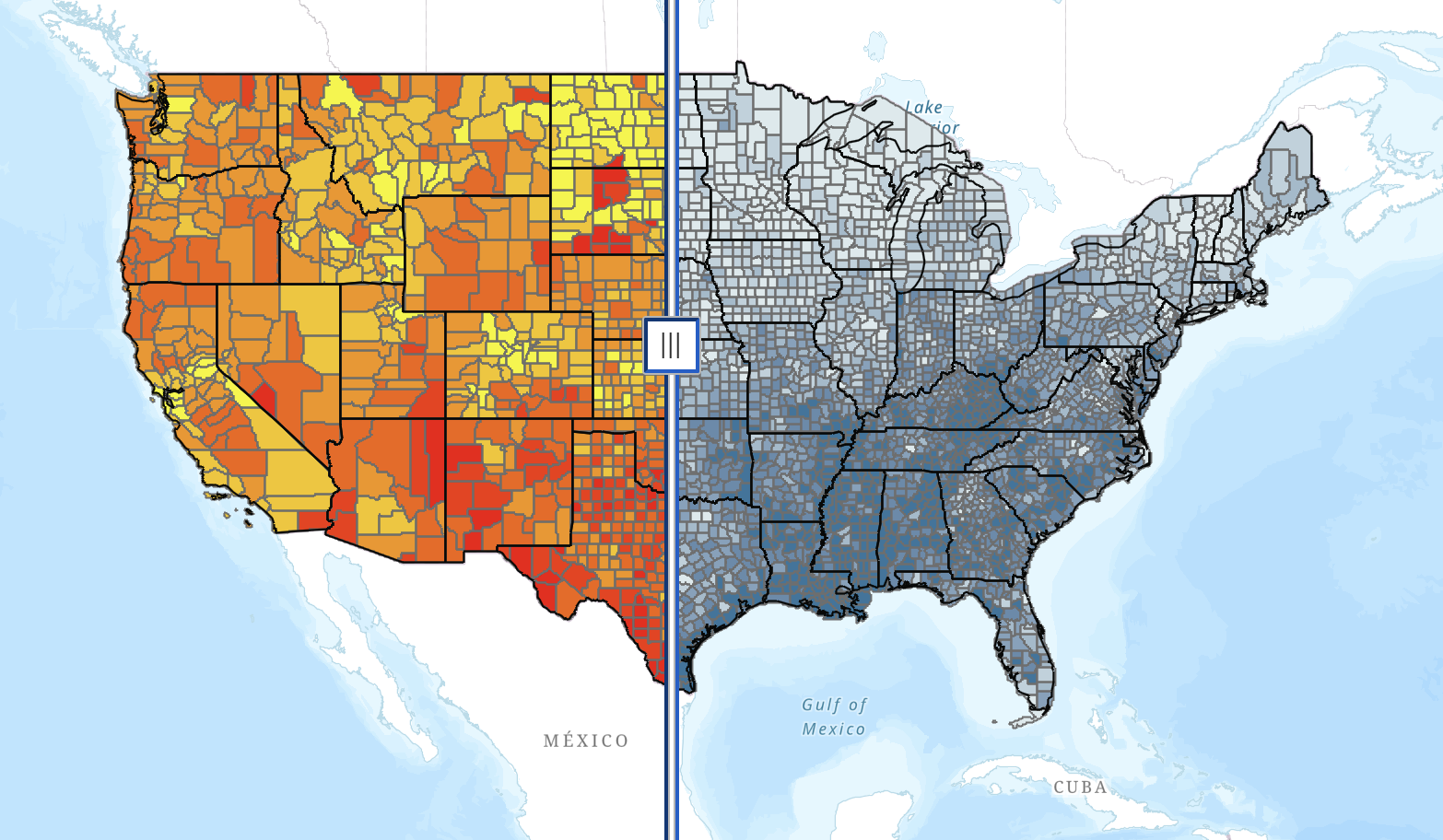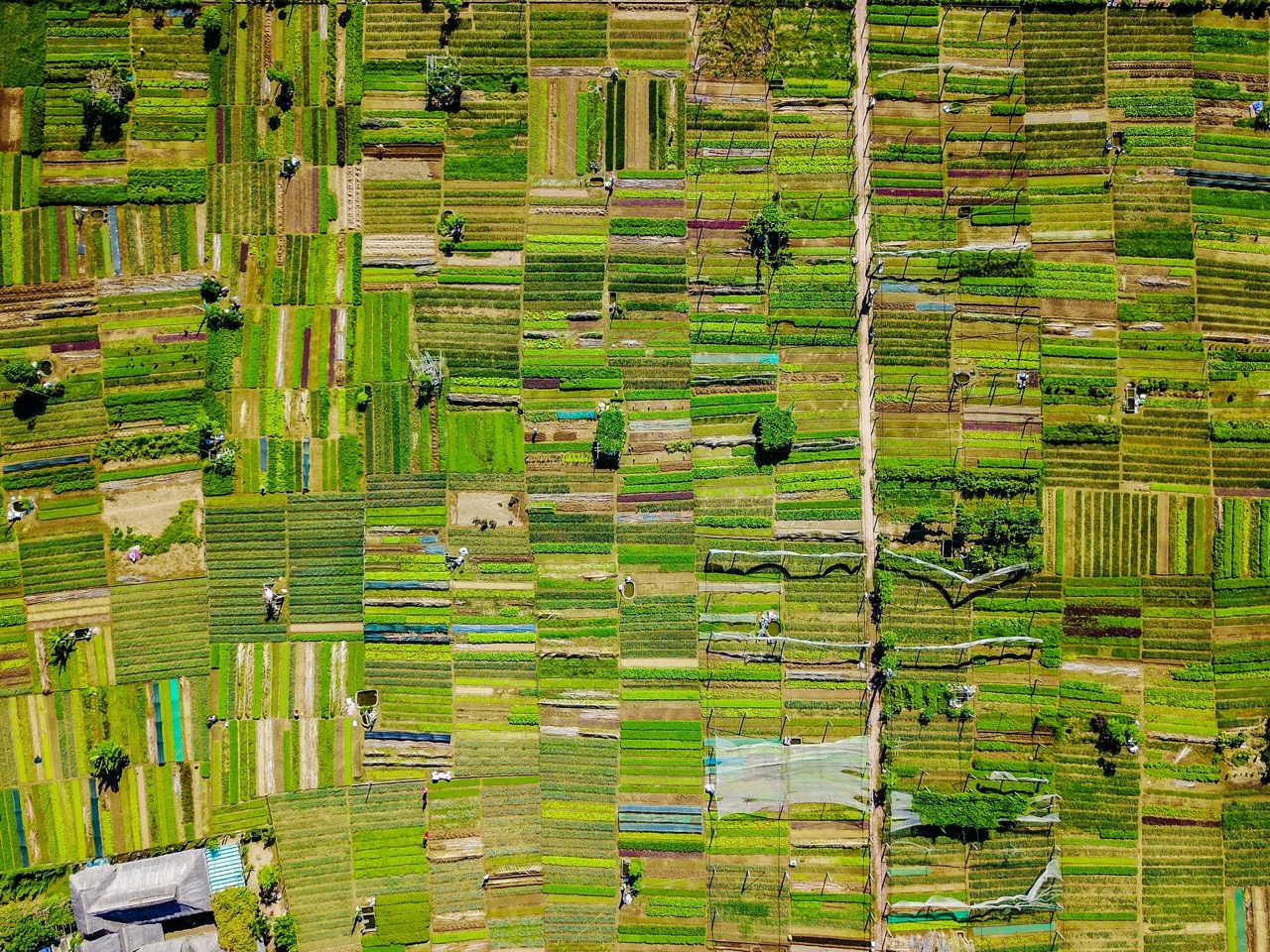Charlotte Border, a tall young woman dressed in dark wash jeans and a grey long sleeve t-shirt, has her hair tied tightly in a bun as she packs zucchini into a cardboard box from a produce load that had just come in. In the long white truck were six large blue crates filled with zucchini and about 50 sacks of purple potatoes. On this wet, foggy Monday afternoon, Charlotte prepares for the next two days of packing at Stonefield Farm, Boston Area Gleaners’ new location in Acton, Massachusetts.

Charlotte, the Operations Director at Boston Area Gleaners, greeted me with a smile, welcoming me to the farm. She unhooked her walkie-talkie from her jeans pocket and called in Director of Strategy Dylan Frazier, requesting that he join us in the red barn. Walking through the side opening of the barn, I followed as she gestured to an open white-walled packing room filled with tables, wooden crates, and metal lifts, all of which would be used to pack 42,500 pounds of purple potatoes that The Farmlink Project helped connect from LaJoie Growers up in Van Buren, Maine to Boston Area Gleaners on July 6, 2021. While the farm seemed quiet, she said tomorrow it would be filled with rows of packing lines with ten people each, all volunteers helping to carry produce in from the truck and package it up.
A voice sounds through the walkie talkie telling Charlotte to go outside because a hawk had just caught its lunch and planted itself on a black Honda. As we both rushed back through the door, I got a beautiful view of Stonefield Farm. The red barn, which is the heart of all Boston Area Gleaners’ operations, is surrounded by plains of produce growing where a few farmers trek through the thick mud, checking in on the plants after the recent rainfall. As we stepped off the cement deck, a white car pulled up the narrow driveway, the gravel crackling under its wheels. From it emerged a middle-aged man in a faded blue-gray, short sleeve button-down, tan cargo pants, and mud-coated rubber boots that ended just above his ankles. He, too, greeted me with a kind-hearted smile as he planted himself at one of the wooden picnic tables to our right.

Dylan has worked at Boston Area Gleaners for almost nine years, having started when the organization consisted of only him and two other part-time members. With just an old, run down minivan and a small budget, they gleaned a couple thousand pounds of food in their first few years. The organization has experienced tremendous growth since its inception: in 2020, the organization gleaned and distributed eight million pounds of food.
“I think what's remarkable about what we do is not so much the volume of what we do, but how we do it, you know, because volume is all relative to the size of the organization. One thing that's been core to our identity over this whole time is punching above our weight—and that comes from the dedication of staff and volunteers. So yeah, folks like Charlotte put in 80 to 90 hours a week because they're passionate about it.”
Dylan looked out onto the neighboring plain, recalling the first time he truly realized the dysfunction in the food system and how Boston Area Gleaners worked to solve this issue through connecting the dots of supply and demand.
“A few years back, we were out gleaning about six acres of brussels sprouts and the farmer was short of a waiver to harvest them, so he said, 'you guys can take as much as you want.' We spent at least 12 hours harvesting all day long, and we filled our box truck with these brussels sprouts, but we didn't even take 25 percent of what was out there, so there was still a tremendous amount that we left behind. The farmer was under some pressure to get it mowed and put a cover crop down, too. On my way home, I stopped by this restaurant called Clover Food Lab. I went in there, and the person informed me that they couldn't source the brussels sprouts for their brussels sprout sandwich, so they were discontinuing it early for the season. And I was like, ‘Are you kidding me? I was just standing in this giant field of brussels sprouts. What do you mean, you can't find any?’ So, I got a hold of the manager and was like, ‘Hey! I got brussels sprouts.’ So, long story short, we hooked him up with the farmer to sell the brussels sprouts. The guys still call me the 'brussels sprout guy' when I go into Clover.”
It’s these sorts of longer-term connections that Boston Area Gleaners hopes to continue to forge as they grow as an organization. Since Dylan first joined Boston Area Gleaners, the mission has evolved from being the band-aid solution of the evolving food insecurity crisis and the climate effects it has to now analyzing the causes of why farms are not able to harvest all their crops and why people are not paid the living wages needed to afford food. The organization has started tackling these two issues by focusing on their own culture: they have worked to focus more on their year-round staff, ensuring they get fair wages as well as starting a new program called the Boston Food Hub, which seeks to buy farmers’ crops before they're in a position to need to donate it. Not only does it create a stronger economy, but it also ensures that the farms are able to take care of their staff, too, Dylan said. COVID-19, unfortunately, made Dylan, the others at Boston Area Gleaners, and the greater community more aware of the harsh realities of food insecurity as a prevalent problem within the community, but also provided the recognition to incite others to get involved and donate.
“An impression from COVID was going into Chelsea, Everett, and Revere where, at the time, I was doing a lot of truck driving. To see thousands of people lined up waiting for food in the freezing temperatures of winter is a pretty heavy experience. You see a mother with two babies that are screaming because it's freezing, and you know they're desperate. So, when you see that firsthand, where the line would go around three city blocks and people are waiting three hours for the box, it's a heavy experience. We've been working really hard at reducing farm-level surplus and doing the hunger relief work for a long time. And when COVID hit, it kind of just turned on a spotlight on the work we've been doing for a while. With that came some attention, a lot of work, and funding. We got some recognition which allowed us, within a one-year timeline, to dramatically increase our coolers, fleet of trucks, drivers for these trucks, staff, and also to purchase this farm, which probably wouldn't have happened without COVID-19.”
A pinging on his phone then broke Dylan’s steady gaze. He answered the phone, responding to confirm that Boston Area Gleaners needed an extra 20 dozen more crates of onions for the next couple of days packing boxes. The farm on the phone replied, saying they could only provide an extra five dozen.
Dylan’s eyes began wandering as he processed this information, trying to figure out an alternative solution. He leans back against the table behind him, contemplating with ease despite only having two days left to find the extra 15 dozen onion crates. He then hangs up the phone abruptly and proceeds to call South Oath farm, asking if he could send another truck up to pick up 15 dozen more. His face softens as a man on the other line confirms that they could provide them, ensuring that all the grocery boxes Boston Area Gleaners will pack the following week will have onions in them.
< Back
Charlotte Border, a tall young woman dressed in dark wash jeans and a grey long sleeve t-shirt, has her hair tied tightly in a bun as she packs zucchini into a cardboard box from a produce load that had just come in. In the long white truck were six large blue crates filled with zucchini and about 50 sacks of purple potatoes. On this wet, foggy Monday afternoon, Charlotte prepares for the next two days of packing at Stonefield Farm, Boston Area Gleaners’ new location in Acton, Massachusetts.

Charlotte, the Operations Director at Boston Area Gleaners, greeted me with a smile, welcoming me to the farm. She unhooked her walkie-talkie from her jeans pocket and called in Director of Strategy Dylan Frazier, requesting that he join us in the red barn. Walking through the side opening of the barn, I followed as she gestured to an open white-walled packing room filled with tables, wooden crates, and metal lifts, all of which would be used to pack 42,500 pounds of purple potatoes that The Farmlink Project helped connect from LaJoie Growers up in Van Buren, Maine to Boston Area Gleaners on July 6, 2021. While the farm seemed quiet, she said tomorrow it would be filled with rows of packing lines with ten people each, all volunteers helping to carry produce in from the truck and package it up.
A voice sounds through the walkie talkie telling Charlotte to go outside because a hawk had just caught its lunch and planted itself on a black Honda. As we both rushed back through the door, I got a beautiful view of Stonefield Farm. The red barn, which is the heart of all Boston Area Gleaners’ operations, is surrounded by plains of produce growing where a few farmers trek through the thick mud, checking in on the plants after the recent rainfall. As we stepped off the cement deck, a white car pulled up the narrow driveway, the gravel crackling under its wheels. From it emerged a middle-aged man in a faded blue-gray, short sleeve button-down, tan cargo pants, and mud-coated rubber boots that ended just above his ankles. He, too, greeted me with a kind-hearted smile as he planted himself at one of the wooden picnic tables to our right.

Dylan has worked at Boston Area Gleaners for almost nine years, having started when the organization consisted of only him and two other part-time members. With just an old, run down minivan and a small budget, they gleaned a couple thousand pounds of food in their first few years. The organization has experienced tremendous growth since its inception: in 2020, the organization gleaned and distributed eight million pounds of food.
“I think what's remarkable about what we do is not so much the volume of what we do, but how we do it, you know, because volume is all relative to the size of the organization. One thing that's been core to our identity over this whole time is punching above our weight—and that comes from the dedication of staff and volunteers. So yeah, folks like Charlotte put in 80 to 90 hours a week because they're passionate about it.”
Dylan looked out onto the neighboring plain, recalling the first time he truly realized the dysfunction in the food system and how Boston Area Gleaners worked to solve this issue through connecting the dots of supply and demand.
“A few years back, we were out gleaning about six acres of brussels sprouts and the farmer was short of a waiver to harvest them, so he said, 'you guys can take as much as you want.' We spent at least 12 hours harvesting all day long, and we filled our box truck with these brussels sprouts, but we didn't even take 25 percent of what was out there, so there was still a tremendous amount that we left behind. The farmer was under some pressure to get it mowed and put a cover crop down, too. On my way home, I stopped by this restaurant called Clover Food Lab. I went in there, and the person informed me that they couldn't source the brussels sprouts for their brussels sprout sandwich, so they were discontinuing it early for the season. And I was like, ‘Are you kidding me? I was just standing in this giant field of brussels sprouts. What do you mean, you can't find any?’ So, I got a hold of the manager and was like, ‘Hey! I got brussels sprouts.’ So, long story short, we hooked him up with the farmer to sell the brussels sprouts. The guys still call me the 'brussels sprout guy' when I go into Clover.”
It’s these sorts of longer-term connections that Boston Area Gleaners hopes to continue to forge as they grow as an organization. Since Dylan first joined Boston Area Gleaners, the mission has evolved from being the band-aid solution of the evolving food insecurity crisis and the climate effects it has to now analyzing the causes of why farms are not able to harvest all their crops and why people are not paid the living wages needed to afford food. The organization has started tackling these two issues by focusing on their own culture: they have worked to focus more on their year-round staff, ensuring they get fair wages as well as starting a new program called the Boston Food Hub, which seeks to buy farmers’ crops before they're in a position to need to donate it. Not only does it create a stronger economy, but it also ensures that the farms are able to take care of their staff, too, Dylan said. COVID-19, unfortunately, made Dylan, the others at Boston Area Gleaners, and the greater community more aware of the harsh realities of food insecurity as a prevalent problem within the community, but also provided the recognition to incite others to get involved and donate.
“An impression from COVID was going into Chelsea, Everett, and Revere where, at the time, I was doing a lot of truck driving. To see thousands of people lined up waiting for food in the freezing temperatures of winter is a pretty heavy experience. You see a mother with two babies that are screaming because it's freezing, and you know they're desperate. So, when you see that firsthand, where the line would go around three city blocks and people are waiting three hours for the box, it's a heavy experience. We've been working really hard at reducing farm-level surplus and doing the hunger relief work for a long time. And when COVID hit, it kind of just turned on a spotlight on the work we've been doing for a while. With that came some attention, a lot of work, and funding. We got some recognition which allowed us, within a one-year timeline, to dramatically increase our coolers, fleet of trucks, drivers for these trucks, staff, and also to purchase this farm, which probably wouldn't have happened without COVID-19.”
A pinging on his phone then broke Dylan’s steady gaze. He answered the phone, responding to confirm that Boston Area Gleaners needed an extra 20 dozen more crates of onions for the next couple of days packing boxes. The farm on the phone replied, saying they could only provide an extra five dozen.
Dylan’s eyes began wandering as he processed this information, trying to figure out an alternative solution. He leans back against the table behind him, contemplating with ease despite only having two days left to find the extra 15 dozen onion crates. He then hangs up the phone abruptly and proceeds to call South Oath farm, asking if he could send another truck up to pick up 15 dozen more. His face softens as a man on the other line confirms that they could provide them, ensuring that all the grocery boxes Boston Area Gleaners will pack the following week will have onions in them.
Dylan Frazier and Charlotte Border
Director of Strategy at Boston Area Gleaners & Operations Director at Boston Area Gleaners
Charlotte Border, a tall young woman dressed in dark wash jeans and a grey long sleeve t-shirt, has her hair tied tightly in a bun as she packs zucchini into a cardboard box from a produce load that had just come in. In the long white truck were six large blue crates filled with zucchini and about 50 sacks of purple potatoes. On this wet, foggy Monday afternoon, Charlotte prepares for the next two days of packing at Stonefield Farm, Boston Area Gleaners’ new location in Acton, Massachusetts.

Charlotte, the Operations Director at Boston Area Gleaners, greeted me with a smile, welcoming me to the farm. She unhooked her walkie-talkie from her jeans pocket and called in Director of Strategy Dylan Frazier, requesting that he join us in the red barn. Walking through the side opening of the barn, I followed as she gestured to an open white-walled packing room filled with tables, wooden crates, and metal lifts, all of which would be used to pack 42,500 pounds of purple potatoes that The Farmlink Project helped connect from LaJoie Growers up in Van Buren, Maine to Boston Area Gleaners on July 6, 2021. While the farm seemed quiet, she said tomorrow it would be filled with rows of packing lines with ten people each, all volunteers helping to carry produce in from the truck and package it up.
A voice sounds through the walkie talkie telling Charlotte to go outside because a hawk had just caught its lunch and planted itself on a black Honda. As we both rushed back through the door, I got a beautiful view of Stonefield Farm. The red barn, which is the heart of all Boston Area Gleaners’ operations, is surrounded by plains of produce growing where a few farmers trek through the thick mud, checking in on the plants after the recent rainfall. As we stepped off the cement deck, a white car pulled up the narrow driveway, the gravel crackling under its wheels. From it emerged a middle-aged man in a faded blue-gray, short sleeve button-down, tan cargo pants, and mud-coated rubber boots that ended just above his ankles. He, too, greeted me with a kind-hearted smile as he planted himself at one of the wooden picnic tables to our right.

Dylan has worked at Boston Area Gleaners for almost nine years, having started when the organization consisted of only him and two other part-time members. With just an old, run down minivan and a small budget, they gleaned a couple thousand pounds of food in their first few years. The organization has experienced tremendous growth since its inception: in 2020, the organization gleaned and distributed eight million pounds of food.
“I think what's remarkable about what we do is not so much the volume of what we do, but how we do it, you know, because volume is all relative to the size of the organization. One thing that's been core to our identity over this whole time is punching above our weight—and that comes from the dedication of staff and volunteers. So yeah, folks like Charlotte put in 80 to 90 hours a week because they're passionate about it.”
Dylan looked out onto the neighboring plain, recalling the first time he truly realized the dysfunction in the food system and how Boston Area Gleaners worked to solve this issue through connecting the dots of supply and demand.
“A few years back, we were out gleaning about six acres of brussels sprouts and the farmer was short of a waiver to harvest them, so he said, 'you guys can take as much as you want.' We spent at least 12 hours harvesting all day long, and we filled our box truck with these brussels sprouts, but we didn't even take 25 percent of what was out there, so there was still a tremendous amount that we left behind. The farmer was under some pressure to get it mowed and put a cover crop down, too. On my way home, I stopped by this restaurant called Clover Food Lab. I went in there, and the person informed me that they couldn't source the brussels sprouts for their brussels sprout sandwich, so they were discontinuing it early for the season. And I was like, ‘Are you kidding me? I was just standing in this giant field of brussels sprouts. What do you mean, you can't find any?’ So, I got a hold of the manager and was like, ‘Hey! I got brussels sprouts.’ So, long story short, we hooked him up with the farmer to sell the brussels sprouts. The guys still call me the 'brussels sprout guy' when I go into Clover.”
It’s these sorts of longer-term connections that Boston Area Gleaners hopes to continue to forge as they grow as an organization. Since Dylan first joined Boston Area Gleaners, the mission has evolved from being the band-aid solution of the evolving food insecurity crisis and the climate effects it has to now analyzing the causes of why farms are not able to harvest all their crops and why people are not paid the living wages needed to afford food. The organization has started tackling these two issues by focusing on their own culture: they have worked to focus more on their year-round staff, ensuring they get fair wages as well as starting a new program called the Boston Food Hub, which seeks to buy farmers’ crops before they're in a position to need to donate it. Not only does it create a stronger economy, but it also ensures that the farms are able to take care of their staff, too, Dylan said. COVID-19, unfortunately, made Dylan, the others at Boston Area Gleaners, and the greater community more aware of the harsh realities of food insecurity as a prevalent problem within the community, but also provided the recognition to incite others to get involved and donate.
“An impression from COVID was going into Chelsea, Everett, and Revere where, at the time, I was doing a lot of truck driving. To see thousands of people lined up waiting for food in the freezing temperatures of winter is a pretty heavy experience. You see a mother with two babies that are screaming because it's freezing, and you know they're desperate. So, when you see that firsthand, where the line would go around three city blocks and people are waiting three hours for the box, it's a heavy experience. We've been working really hard at reducing farm-level surplus and doing the hunger relief work for a long time. And when COVID hit, it kind of just turned on a spotlight on the work we've been doing for a while. With that came some attention, a lot of work, and funding. We got some recognition which allowed us, within a one-year timeline, to dramatically increase our coolers, fleet of trucks, drivers for these trucks, staff, and also to purchase this farm, which probably wouldn't have happened without COVID-19.”
A pinging on his phone then broke Dylan’s steady gaze. He answered the phone, responding to confirm that Boston Area Gleaners needed an extra 20 dozen more crates of onions for the next couple of days packing boxes. The farm on the phone replied, saying they could only provide an extra five dozen.
Dylan’s eyes began wandering as he processed this information, trying to figure out an alternative solution. He leans back against the table behind him, contemplating with ease despite only having two days left to find the extra 15 dozen onion crates. He then hangs up the phone abruptly and proceeds to call South Oath farm, asking if he could send another truck up to pick up 15 dozen more. His face softens as a man on the other line confirms that they could provide them, ensuring that all the grocery boxes Boston Area Gleaners will pack the following week will have onions in them.
.png)







.svg)
.svg)
.svg)